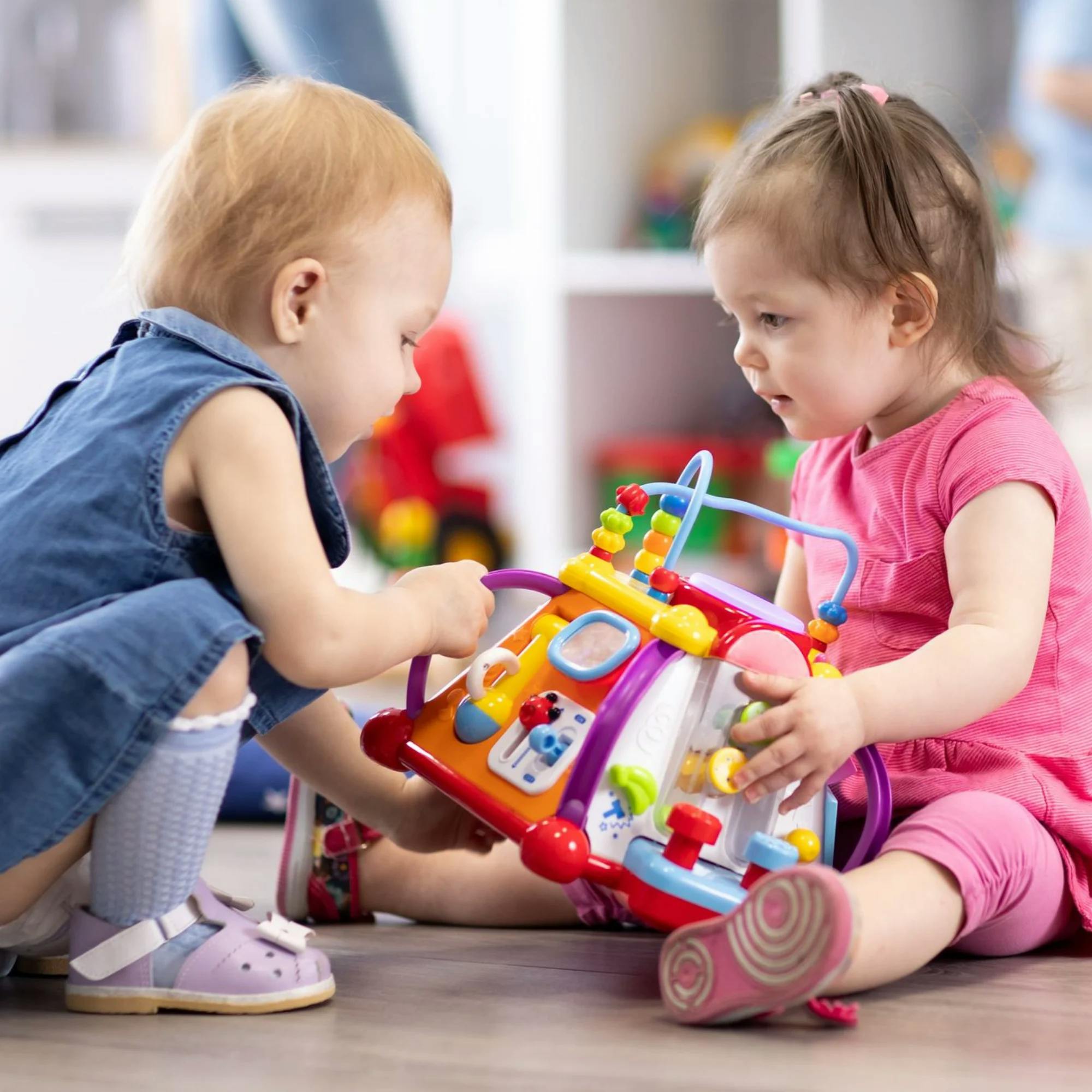
How to Help Children Express Their Feelings
 Abby Barnes, M.S., CCC-SLP
Abby Barnes, M.S., CCC-SLP
We all experience a variety of emotions in response to different situations. Children feel the same emotions that adults do--but sometimes they have trouble expressing them.
Imagine if you were unable to express how you felt while you were experiencing a strong emotion. It would probably be pretty frustrating! As a parent or caregiver, there are steps you can take to help your child recognize and express their feelings to other people. Read on to learn how.
The importance of children expressing their feelings
Helping your child express their feelings can decrease their frustration. It can cut down on behavioral problems and also improve your child's emotional well-being.
Strong feelings are a natural part of life, but how we interpret, express, and respond to these feelings is important. Every day, we express our thoughts and feelings to others. We also have to understand the feelings of others so we can empathize with their situation. All of these skills start in the early years of childhood.


How to teach your child about emotions
In order for children to learn how to express their emotions, they first have to learn what each emotion is called. Use these tips to teach your child the names of emotions.
"In the moment" teaching
When your child is experiencing a pleasant emotion, like happiness or excitement, take time to say the name of the emotion and explain it a little further. Here’s an example: “You seem happy! I see you're smiling. You look happy to have your snack!” It's helpful to repeat the name of the emotion a few times.
If your child is experiencing an unpleasant emotion, like sadness or anger, you should name these emotions as well. However, it’s important to note that during an unpleasant emotion, your child may be less likely to listen and absorb what you're saying. In some cases, it may be better to wait until your child has calmed down before reflecting on how they felt.
Here are a few other ways to use "in the moment" teaching. Talk with your child privately if you're out in public and see another child experiencing an unpleasant emotion. Describe what you saw and how the other child might be feeling. You can also talk about how characters in your kiddo's favorite books or shows are feeling.
No matter how you do it, try to name emotions several times a day with your child, throughout your usual routines.


Parent modeling
You can also model your own emotions. As you experience different feelings throughout the day, you can name them to your child. Try saying things like, “I’m so excited that we're going to play at the park!” or “I am sad the rain is keeping us from going to the park.” Make sure to include facial expressions, such as smiling or slightly frowning, to further communicate these feelings to your child.
Using books and pictures
Pictures and books that show different facial expressions and feelings are excellent ways to help children learn emotions! Use these during some consistent, structured practice time together.


Mirror activities
One activity that your child will love is making different facial expressions for emotions in front of the mirror. Practice making faces for the feelings happy, sad, angry, scared, or excited. Name the emotion for your child so they learn to associate the facial expression with the feeling. Once they've made some progress, spend time asking your child to label the emotion themselves.
Using pictures to communicate feelings
If your child isn't yet always using words to communicate their wants and needs, they may benefit from using pictures to communicate.
Here’s an easy idea: Color a simple yellow smiley face, a blue frowny face, and a red angry face on individual pieces of paper. Use these pictures yourself to teach and express emotions to your child. Make sure your child can easily access these pictures throughout the day. If you notice your child experiencing a strong emotion, tell your child, “Show me how you’re feeling” and prompt them to use the pictures. Over time your child should begin to point to the picture that relates to their feeling all by themselves.
Feel free to have some fun with this activity. Instead of coloring pictures, you could take photos of yourself or your child making a variety of facial expressions for different emotions. This makes the task more personal and relatable for your child. An actual photo can also depict emotions more clearly than a picture.


Ask your child structured questions
It may take a while before your child spontaneously tells you, “I feel ______.” And that's to be expected!
Being able to communicate something as abstract as feelings, especially in the moment, is challenging. It's completely normal if this takes some time for your child to learn and comprehend. In the meantime, you can offer your child some structured conversation to help make communication a little easier.
Let’s say your child is crying and clearly upset. Ask your child, “Are you sad?” Then wait. Waiting is important, as it gives your child enough time to gather their thoughts and form a thoughtful response. Hopefully your child will be able to reply, “Yes,” if they're feeling sad.
Here's another tip to try: Give your child two choices. You can say, “Do you feel sad, or happy?” Again, hopefully your child will choose the answer that fits their emotional state.


Help your child spontaneously express emotions
As your child improves their skills with structured questions and exercises, it's time to encourage them to spontaneously express their emotions. You can do this by simply asking your child, “How do you feel?” throughout the day. As your child gets older, they should be able to clearly answer this question on their own. Responses such as “I feel happy” or “I feel excited” are fantastic signs that they're maturing and making progress.
To encourage this skill, give your child frequent opportunities to express their feelings by asking them how they feel, or what’s wrong. Use the techniques described above until they're able to tell you their feelings independently, without any prompting.
The time you invest in helping your child better express their feelings will serve them a lifetime. There may be some communication roadblocks along the way, but by using the techniques covered in this article, you’ll have a more confident communicator on your hands in no time!
How Expressable Can Help
Concerned your child isn't reaching age-expected milestones? Looking for communication support from a professional? Expressable is a national online speech therapy practice serving children and adults. We treat all major areas of communication and feeding, offer flexible hours including evenings and weekends, and accept most major health insurance plans. We’re proud to have earned more than 3,000 5-star reviews from our clients (4.9/5 average).
Our therapy model is centered on parent and caregiver involvement. Research proves that empowering caregivers to participate in their loved one’s therapy leads to better outcomes. That’s why we combine live, 1-on-1 speech therapy with personalized education and home practice activities for faster progress.
Communication is more than words. It’s how we share how we feel and show who we are. We’re here to help you or your child do just that.








